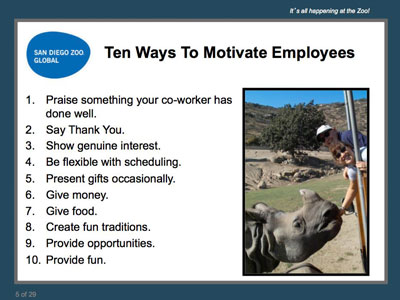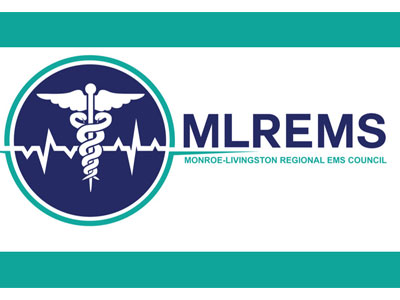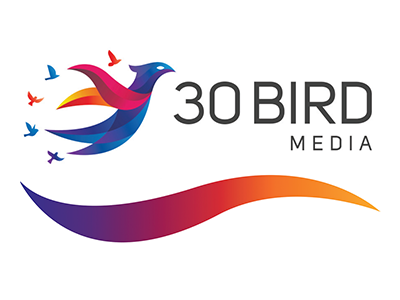 |
Observation and Assessment of the Learning Environment (CDA 7) |
2.00 |
Research finds that the quality of a child’s early learning environment has a significant impact on his well-being and ability to learn. This course focuses on two significant aspects of environmental quality: the relationships and rich interactions that happen in the classroom, and the physical setting and learning materials. Special emphasis is placed on observation and assessment of the learning environment to make improvements and support positive outcomes for children. The course covers how professionals who work with young children can use observation and assessment as a way to support children’s development (social, emotional, cognitive, physical, and approaches to learning), inform teaching practices, enhance interactions with children, and plan activities for young children. This course is designed to be part of a Child Development Associate (CDA) Credential™ curriculum, and covers CDA subject area 7: Observation and Assessment. It can also be taken as a stand-alone learning event or as part of a broader early childhood education curriculum. |
 |
Roaring Rewards: Creating a World Famous Employee Recognition Program |
1.00 |
Recognizing employees for hard work is an essential component to employee loyalty and a contributing factor to healthy workplace morale. Some employers go to great lengths to come up with recognition programs while others rely on the conventional method of simply praising employees for a job well done. There are a number of reasons you can choose to recognize employees and a number of ways to create an awards program. Take an inside look at how the world famous San Diego Zoo has truly established itself as an employer of choice with its innovative and robust "Roaring Rewards" employee recognition program. |
 |
Safety and Survival in an Active Shooter Event (Corrections) |
1.00 |
Recent national tragedies remind us that the risk is real: an active shooter incident can happen in any place at any time. The best way to make sure you are safe is to prepare ahead of time and be ready. This course will take you through 3 different phases of an active shooter event: 1. Before: Prepare Ahead of Time; 2. During: Safety and Survival During an Active Shooter Event; and 3. After: Safety After an Active Shooter Event. |
 |
Draft Publication: Writing for Peer Review |
1.00 |
Ready to publish the results of your behavioral inquiry? Listen to the experiences of a research team that takes the outline from a presentation and turns it into a manuscript for peer review. Learn about the checklist of do's and don'ts that editors and reviewers will look for in evaluating your manuscript. Share creative tips for getting past writer's block. |
 |
Introduction to Evaluation |
2.00 |
Quality programs operate with the idea that they will change, improve, and grow. Knowing how to identify areas needing improvement is the key to program quality, which must be continually evaluated to identify strengths and weaknesses. In this course, participants will learn what evaluation is, why it is important for programs, and ways they can evaluate their own programs. |
 |
Quality Management: Fundamentals of Quality Management (Instructor Guide) |
0.50 |
Quality management is the process, directed by upper management, through which a company continuously tries to improve the quality of workmanship, processes, and products. The primary aim of quality management is to organize project planning, product design, and program implementation, such that resulting products and services are available to customers at a high quality and reasonable cost.
In this course you will learn to: identify the concepts commonly associated with quality management, the role of management in implementing quality, and the steps an organization should follow to incorporate improvements into daily management, and identify the ways in which variation leads to loss, select characteristics of common causes of variation, and identify frequent sources of variation.
This Instructor's Edition of this course includes notes and suggestions to assist you in presenting the material, whether in an in-person classroom setting or as an instructor-led online or distance-learning course. It also provides you with the answers to questions found in mid-lesson activities, as well as in the quiz that concludes the course. |
 |
Quality Management: Fundamentals Of Quality Management |
0.50 |
Quality management is the process, directed by upper management, through which a company continuously tries to improve the quality of workmanship, processes, and products. The primary aim of quality management is to organize project planning, product design, and program implementation, such that resulting products and services are available to customers at a high quality and reasonable cost.
In this course you will learn to: identify the concepts commonly associated with quality management, the role of management in implementing quality, and the steps an organization should follow to incorporate improvements into daily management, and identify the ways in which variation leads to loss, select characteristics of common causes of variation, and identify frequent sources of variation. |
 |
Building Upward: Pulse Oximetry for BLS Providers |
1.00 |
Pulse oximetry is a tool that can give a medic a great deal of insight into the patient's condition. Paramedic Instructor Peter Bonadonna does a fantastic job of illustrating the fundamental issues that surround pulse oximetry readings and how they should be interpreted. Final Exam: This multiple-choice exam is designed to test your knowledge of the material you just reviewed. You have two attempts to gain an 80% or higher on this exam. Please take your time and answer each question carefully. |
 |
Advanced Interpersonal Communication: Building Relationships Through Feedback |
0.75 |
Providing feedback is an important element in building a relationship because it closes the circle of communication that links the listener and speaker. Until feedback is given, the people involved in communication are either speakers or listeners. Once a speaker receives feedback, the roles switch, and both parties are equally involved in a conversation.
In this course you will learn to use paraphrasing effectively, and provide positive and constructive feedback in a business setting. |
 |
Advanced Interpersonal Communication: Building Relationships Through Feedback (Instructor Guide) |
0.75 |
Providing feedback is an important element in building a relationship because it closes the circle of communication that links the listener and speaker. Until feedback is given, the people involved in communication are either speakers or listeners. Once a speaker receives feedback, the roles switch, and both parties are equally involved in a conversation.
In this course you will learn to use paraphrasing effectively, and provide positive and constructive feedback in a business setting.
This Instructor's Edition of this course includes notes and suggestions to assist you in presenting the material, whether in an in-person classroom setting or as an instructor-led online or distance-learning course. It also provides you with the answers to questions found in mid-lesson activities, as well as in the quiz that concludes the course. |
 |
2021 Quarter 1: COVID-19 Quality Care Updated |
1.00 |
Providers in Western NYS have learned a great deal about treating patients that suffer from COVID-19 infections. This session was recorded in January 2021. Paramedic Shawna Rizzi does a fantastic job of interviewing Dr. Christopher Galton. Dr. Galton draws on his experience as a paramedic, EMS medical director, intensivist, and anesthesiologist to summarize the changes that every paramedic should know.
Final Exam: This multiple-choice exam is designed to test your knowledge of the material you just reviewed. You have two attempts to gain an 80% or higher on this exam. Please take your time and answer each question carefully. |
 |
Project Teams: Creating a Project Team |
1.00 |
Project teams and non-project teams are similar because they both often have specific time frames in which to complete tasks. However, project teams also have a time frame for the life of the team, whereas non-project teams usually don’t. A non-project team might be established to monitor the effectiveness of an organization’s advertising. The need to monitor advertising effectiveness will be ongoing, and the team will not have an ending date.
In this course you will learn to: identify the characteristics of a project team, and understand who the project stakeholders are, and understand how individual responsibilities and stress affect a project team, and how team members can evaluate their performance. |
 |
Project Teams: Creating a Project Team (Instructor Guide) |
1.00 |
Project teams and non-project teams are similar because they both often have specific time frames in which to complete tasks. However, project teams also have a time frame for the life of the team, whereas non-project teams usually don’t. A non-project team might be established to monitor the effectiveness of an organization’s advertising. The need to monitor advertising effectiveness will be ongoing, and the team will not have an ending date.
In this course you will learn to: identify the characteristics of a project team, and understand who the project stakeholders are, and understand how individual responsibilities and stress affect a project team, and how team members can evaluate their performance.
This Instructor's Edition of this course includes notes and suggestions to assist you in presenting the material, whether in an in-person classroom setting, or as an instructor-led online or distance-learning course. It also provides you with the answers to questions found in mid-lesson activities, as well as in the quiz that concludes the course. |
 |
Microsoft Project 2019 Complete |
16.00 |
Project 2019 Complete covers the concepts and skills needed for maximum productivity in Project, starting with fundamentals and working up to advanced tools and techniques.
Students will benefit most from this course if they have at least some prior knowledge of project management procedures and practices. It is intended to support you in applying this knowledge through the use of Microsoft Project as a project management tool. Some of the topics covered are:
- Creating a new project schedule from scratch
- Understanding and working with task types, scheduling options, and task constraints
- Working with resources, including scheduling and assignment
- Managing the project schedule in accordance with the critical path and project baseline
- Printing project views, dashboards, and various other kinds of reports.
- Working with the Quick Access Toolbar and advanced calendar topics
- Setting resource working-time exceptions, pooling resources for sharing, and creating resource budget cost items
- Working with multiple baselines and interim plans
- Resolving resource conflicts and scheduling issues
- Consolidating projects using Master projects and Subprojects
- Working with Project Server, Project Online, and SharePoint
- Using Project data in other applications
- Creating final reports
There are no specific prerequisites for this course. However, general computer user knowledge is assumed. Any additional experience having worked with forms and/or databases will be helpful. |
 |
Constructing: FAST-ED Overview |
1.00 |
Professor of Emergency Medicine and Chief of the Division of Prehospital Medicine at the University of Rochester, Jeremy Cushman, brings his experienced team of prehospital providers together to discuss the benefits of Field Assessment Stroke Triage for Emergency Destination (FAST-ED). You will want to take notes and download your favorite smartphone app. This lesson is sure to spark an excellent discussion with your training officers and/or medical director(s).
Final Exam: This multiple choice exam is designed to test your knowledge of the material you just reviewed. You have two attempts to gain an 80% or higher on this exam. Please utilize the smartphone app of your choosing and take your time and answer each question carefully. |
 |
Business Problem Solving: Problem-Solving Teams (Instructor Guide) |
1.00 |
Problem-solving teams are created to solve a specific business problem. Ideally, such a team should have members from different departments of your organization. However, you need to develop skills to focus team members on a common goal.
As a team leader, you might be expected to create a team, rather than simply manage a group of people assigned to complete a task. You will play a central role in helping team members interact, communicate, and work together. You will also be expected to plan and execute team meetings. Meetings can be an effective way to communicate information to the group, to decide on an action, to set goals, and to motivate and support team members.
In this course you will learn to: build and manage problem-solving teams and conduct effective meetings, and motivate team members and effectively communicate with them.
This Instructor's Edition of this course includes notes and suggestions to assist you in presenting the material, whether in an in-person classroom setting or as an instructor-led online or distance-learning course. It also provides you with the answers to questions found in mid-lesson activities, as well as in the quiz that concludes the course. |
 |
Business Problem Solving: Problem-Solving Teams |
1.00 |
Problem-solving teams are created to solve a specific business problem. Ideally, such a team should have members from different departments of your organization. However, you need to develop skills to focus team members on a common goal.
As a team leader, you might be expected to create a team, rather than simply manage a group of people assigned to complete a task. You will play a central role in helping team members interact, communicate, and work together. You will also be expected to plan and execute team meetings. Meetings can be an effective way to communicate information to the group, to decide on an action, to set goals, and to motivate and support team members.
In this course you will learn to: build and manage problem-solving teams and conduct effective meetings, and motivate team members and effectively communicate with them. |
 |
Business Problem Solving: Problem-Solving Basics (Instructor Guide) |
1.25 |
Problem-solving is aimed at eliminating problems. The problem-solving process involves identifying a problem, gathering information, generating and evaluating options, and implementing solutions.
Effective problem-solving needs the coordination of knowledge, experience, attitude, intuition, and the abilities of an individual or team. By successfully eliminating problems the first time, you will save your company’s resources and improve its operation.
In this course you will learn to: define the fundamentals of problem-solving, and identify effective problem-solving approaches.
This Instructor's Edition of this course includes notes and suggestions to assist you in presenting the material, whether in an in-person classroom setting or as an instructor-led online or distance-learning course. It also provides you with the answers to questions found in mid-lesson activities, as well as in the quiz that concludes the course. |
 |
Business Problem Solving: Problem-Solving Basics |
1.25 |
Problem-solving is aimed at eliminating problems. The problem-solving process involves identifying a problem, gathering information, generating and evaluating options, and implementing solutions.
Effective problem-solving needs the coordination of knowledge, experience, attitude, intuition, and the abilities of an individual or team. By successfully eliminating problems the first time, you will save your company’s resources and improve its operation.
In this course you will learn to: define the fundamentals of problem-solving, and identify effective problem-solving approaches. |
 |
Business Problem Solving: Problem Solving in the Corporate World |
0.84 |
Problem-solving cultures greatly influence the problem-solving process in organizations. Recognizing the culture that exists in your organization will permit you to develop effective solutions. This approach needs employees with a wide variety of skills and talents.
In this course you will learn to: identify the types of problem solvers and the skills they must possess, and identify different corporate cultures. |
 |
Business Problem Solving: Problem Solving in the Corporate World (Instructor Guide) |
0.84 |
Problem-solving cultures greatly influence the problem-solving process in organizations. Recognizing the culture that exists in your organization will permit you to develop effective solutions. This approach needs employees with a wide variety of skills and talents.
In this course you will learn to: identify the types of problem solvers and the skills they must possess, and identify different corporate cultures.
This Instructor's Edition of this course includes notes and suggestions to assist you in presenting the material, whether in an in-person classroom setting or as an instructor-led online or distance-learning course. It also provides you with the answers to questions found in mid-lesson activities, as well as in the quiz that concludes the course. |
 |
Principles of Geriatric Pharmacotherapy |
1.00 |
Principles of Geriatric Pharmacotherapy, designed for health care professionals, teaches you how to identify treatment goals in older adults. Problems of aging are covered, such as the physiologic changes of the older population. Furthermore, this module identifies tools available to prevent inappropriate prescribing of medication, specifically highlighting the Medication Appropriateness Index, the Beers Criteria, and the STOPP/START Criteria. Some specific medications are discussed that require special care when prescribing them. Finally, you will learn how to ensure safe medication use in older adults. |
 |
Popular Tourniquets |
1.00 |
Prehospital trauma care has not seen many changes that rival the advent of tourniquets. There is a lot of material that is nice to know. This lesson is a brief review of what we believe medics need to know. Successful completion of this lesson will set the stage for higher-level conversations. More importantly, we hope that you will be encouraged to practice applying the tourniquets until you have obtained true proficiency. Final Exam: This multiple-choice exam is designed to test your knowledge of the material you just reviewed. You have two attempts to gain an 80% or higher on this exam. Please take your time and answer each question carefully.
|
 |
Microsoft PowerPoint 2019 Complete |
16.00 |
PowerPoint 2019 Complete covers the concepts and skills needed for maximum productivity in PowerPoint, starting with fundamentals and working up to advanced tools and techniques. This course maps to the objectives of the Microsoft Office Specialist exams for PowerPoint 2019. Objective coverage is marked throughout the course, and you can download an objective map for the series.
Students will benefit most from this course if they want to start with the basics and become power users of 2019. The course covers how to create, navigate, format, and customize PowerPoint presentations, as well as advanced features such as animation, transition techniques, adding and formatting media, track corrections, working with multiple presentations, creating custom slide shows, and working with security and sharing options.
The course assumes students know how to use a computer, and that they're familiar with Microsoft Windows. It does not assume that they've used a different version of PowerPoint or any other presentation program before. |
 |
Organizational Communication: Power, Politics, and Diversity (Instructor Guide) |
0.75 |
Power is the ability to influence someone to do something that they would not do without encouragement. Various types of power and power strategies depend on the level of influence. The existence of different levels of power in an organization gives rise to organizational politics.
Politics can arise between individuals who differ from each another. To avoid confrontation arising from differences, it is important for people to recognize the benefits of diversity within their organization.
In this course you will learn to: identify different levels and types of power, identify strategies to manage diversity and to communicate in different cultures, and identify the steps and guidelines for empowerment.
This Instructor's Edition of this course includes notes and suggestions to assist you in presenting the material, whether in an in-person classroom setting, or as an instructor-led online or distance-learning course. It also provides you with the answers to questions found in mid-lesson activities, as well as in the quiz that concludes the course. |


























